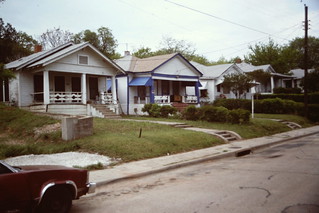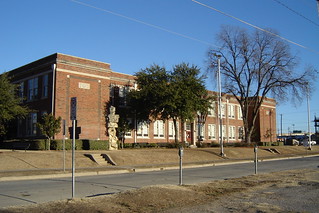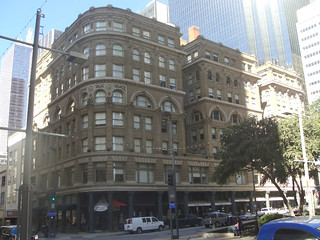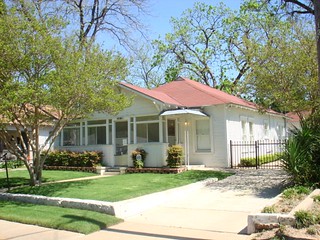Dallas African Americans have played a significant role in the development and growth of the city. From establishing independent communities upon emancipation to designing stately buildings, and standing up for civil rights, the actions, dreams, and hopes of African Americans are reflected in our city’s landscape and built environment.

Soon after learning of their emancipation in 1865, Blacks across the state began settling in groups, often outside of city limits where they felt safer from a population still reeling from the loss of the Civil War. In Dallas, African American communities, known as freedmantowns, began springing up both within and outside of the city proper. As they became established, they took on other names such as North Dallas, Tenth Street, Joppa, Egypt, The Prairie, Frog Town, and White Rock, just to name a few.
Because of segregation, freedmantowns typically grew into self-sustaining communities. Residents of North Dallas, located three miles north of today’s Pacific Avenue/Central Expressway intersection, established churches, schools, stores, and clinics. Several of these institutions remain influential today, including but not limited to, St. Paul United Methodist, New Hope Baptist, and Booker T. Washington High School.

One of the first acts of North Dallas residents was to purchase land for a cemetery (now venerated with the Freedman Memorial) near today’s Central Expressway and Lemmon Avenue. Shortly thereafter, Emanu-el, Calvary, and Greenwood were established next to the freedman burial ground. Thus, African Americans were instrumental in determining the location of an important sector of Dallas – the final resting place of citizens.
Like North Dallas, African American communities elsewhere were expanding, but with segregation well entrenched, Blacks were not free to live wherever they chose. By the 1940s, though, many were under pressure to relocate for various reasons. With so few options, they had no choice but to move near the White neighborhoods in southern Dallas. Sadly, several were ‘welcomed’ with bombings on their front porch. Nevertheless, African Americans persevered and had a major impact on the layout of the city as they bravely established areas they could call home.

Today, evidence of the African American legacy is visible throughout Dallas. North Dallas was lost due to the development of Uptown, but St. Paul United Methodist, Booker T. Washington High School, and the Moreland YMCA (now the Dallas Black Dance Theatre) stand as reminders of an enclave that was once a vibrant center of Dallas’ Black population. The architectural work of William Sydney Pittman can be viewed at the Knights of Pythias building, 2551 Elm Street and the St. James AME Church, 624 N. Good Latimer. The building of Dr. Benjamin Bluitt, an early 1900s African American doctor, remains at 2036-38 Commerce. The Tenth Street Neighborhood Historic District is the last intact freedmantown in Dallas, but many other early neighborhoods and planned communities have long endured. Wheatley Place, Queen City, Ideal, Bonton, Joppa, Hamilton Park, McShann Estates, and others, demonstrate in one way or another the contribution of Dallas’ Black citizens.

At the same time, African Americans have had to fight for equality. As the civil rights movement took hold in the 1960s, various places became associated with this historic event. The H.L. Green store (formerly located in the Wilson Building at 1623 Main), was the site of demonstrations and was the first store in the city to desegregate their lunch counter. The home of Civil Rights activist, Juanita Craft stands at 2618 Warren where Martin Luther King, Jr. and Lyndon Johnson both met with Ms. Craft.
The places mentioned here represent only a few of the sites worth visiting, remembering, and honoring. We hope you will join us in doing so.
Marsha Prior, Ph.D.
Historic Preservation Planner
City of Dallas


